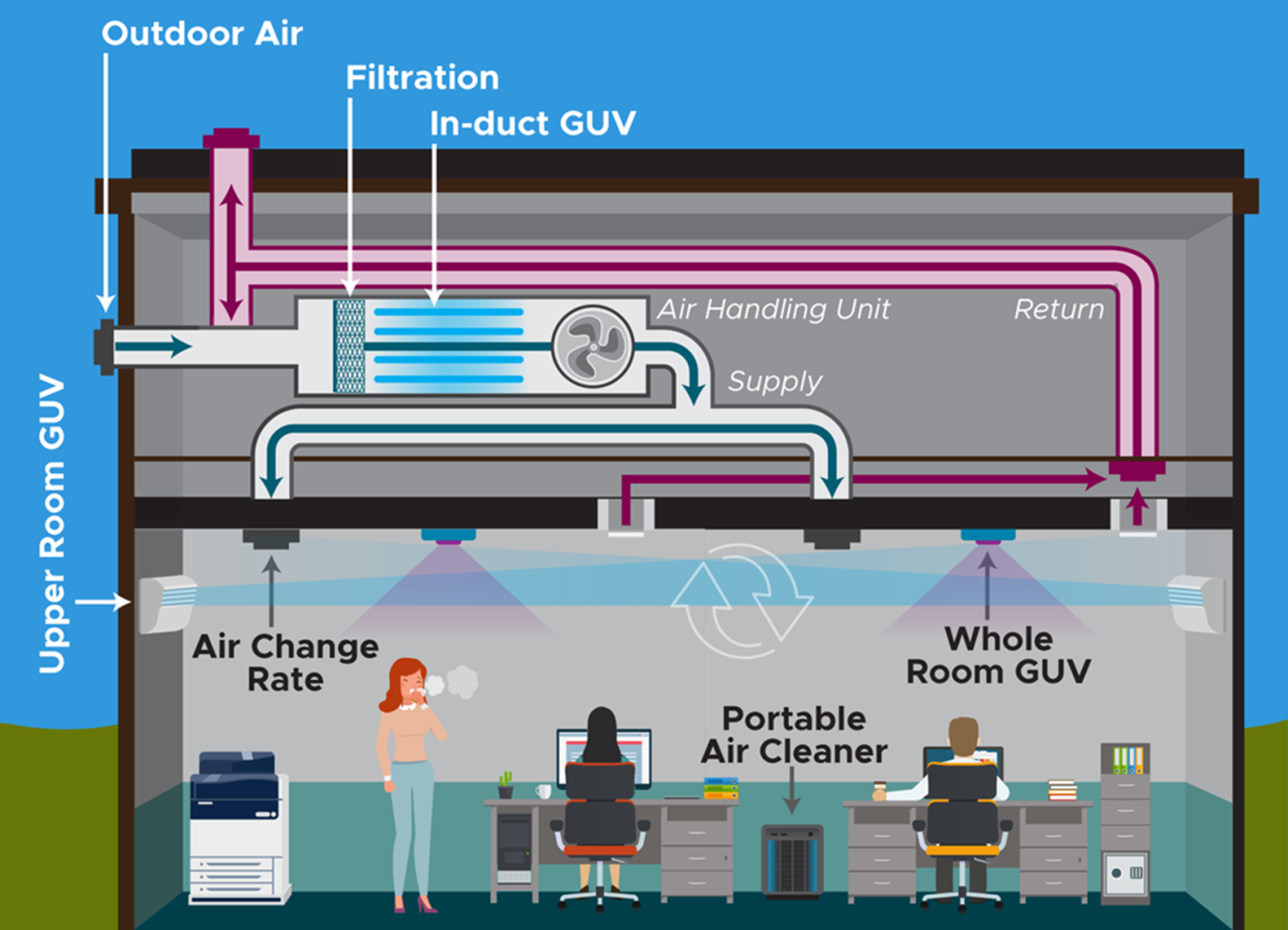The U.S. Department of Energy (DOE) has published the first round of CALiPER test results for germicidal ultraviolet (GUV) products. The results highlight both substantial energy efficiency opportunities and efforts that are needed to address performance
October 6, 2023
Measures to reduce spread of airborne diseases (Image: PNNL)
The U.S. Department of Energy (DOE) has published the first round of CALiPER test results for germicidal ultraviolet (GUV) products. The results highlight both substantial energy efficiency opportunities and efforts that are needed to address performance claims and testing limitations.
GUV disinfection technology is among the most effective and energy-efficient methods to reduce airborne disease transmission. GUV installations can play a critical role in meeting new ASHRAE and CDC building design guidelines. The predominant GUV technology is low-pressure mercury (LPM), which has been used in health and institutional settings for decades. Emerging alternatives include UV-emitting LEDs or krypton-chloride-based (KrCl) excimer lamps. Stakeholders, including industry groups, researchers, and consumer advocates, suggested that some products may not be delivering on performance claims, so this report seeks to address these concerns with a rigorous approach.
This report follows the model of the Commercially Available LED Product Evaluation and Reporting (CALiPER) program, launched in 2006 to address a need for unbiased, trusted performance information for LED lighting products that were beginning to enter the general illumination market. Measurement data from testing real products at commercial test laboratories enables assessment of performance claims and performance comparisons between different lighting technologies. Published findings help educate stakeholders (e.g., buyers, specifiers, product developers, voluntary standards developers) and encourage responsible performance claims using industry-standard test methods and accredited test laboratories.
CALiPER identified several product categories for the first round of GUV product testing, including seven portable towers (five LED and two LPM), one whole-room luminaire for occupied rooms (LED), and five whole-room luminaires for vacant rooms (all LPM).
Key findings include:
- Questionable performance claims. Ratings were often absent, untestable, contradictory, or ambiguous. All products were marketed as producing UV-C, but some LED products emitted none.
- Substantial energy efficiency opportunities. UV-C radiant efficiency varied widely, from 0.04% for the lowest-output UV-C emitting LED product to 42% for the highest-output LPM product. LED towers emitted only or mostly UV-A.
- Varying long-term performance. UV-C output from LED products decreased rapidly, and the white plastic housing of one LPM tower had visibly yellowed after just three days of operation.
- Testing challenges and limitations. UV-C output power varied by about 25%, depending on the measurement method, and UV-C intensity measurements of the larger products were limited to the near field, compromising the utility of this data for system design and evaluation. The results demonstrate more work is needed to address testing limitations and improve testing laboratory infrastructure and capabilities to support the accurate testing of GUV products.
It is important to recognize that these findings may not be reflective of all GUV products on the market. Round 1 included several consumer-oriented products purchased from online retailers, whereas future rounds will focus more on commercial-oriented upper-room and whole-room luminaires for occupied spaces.
Download the summary report to read about the Round 1 test results and recommendations, or the full report for more detailed discussion of the tested products, methods, and results.

